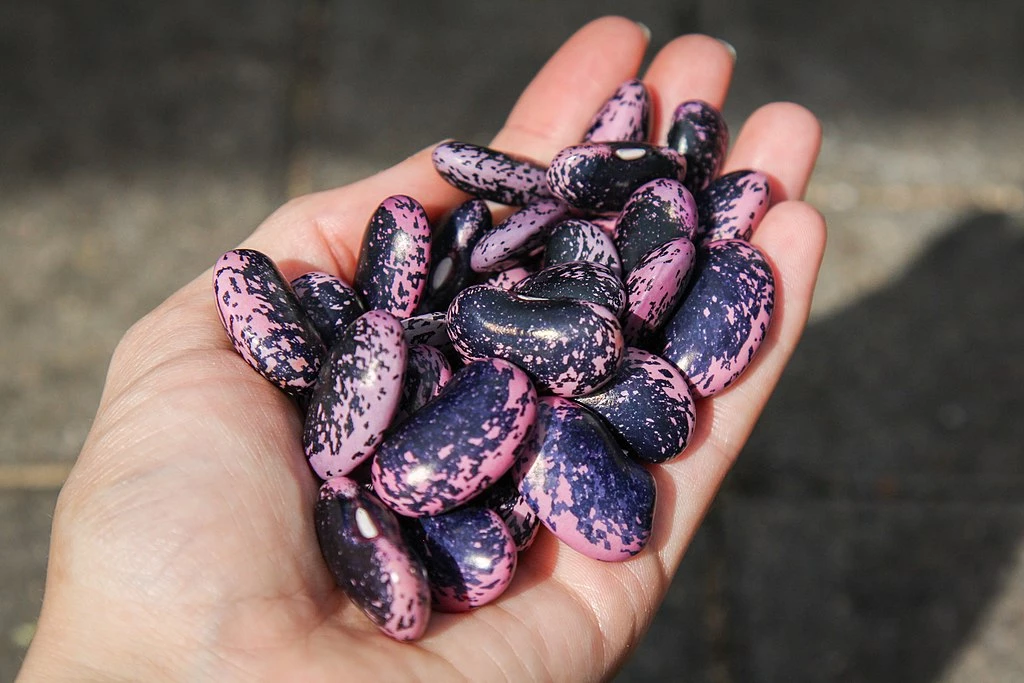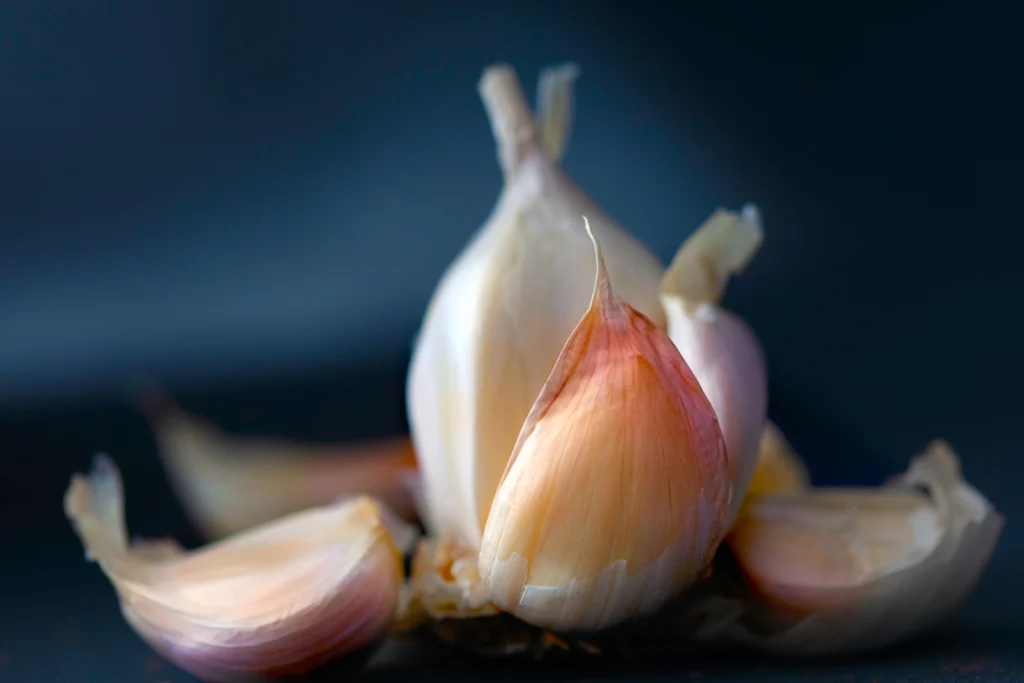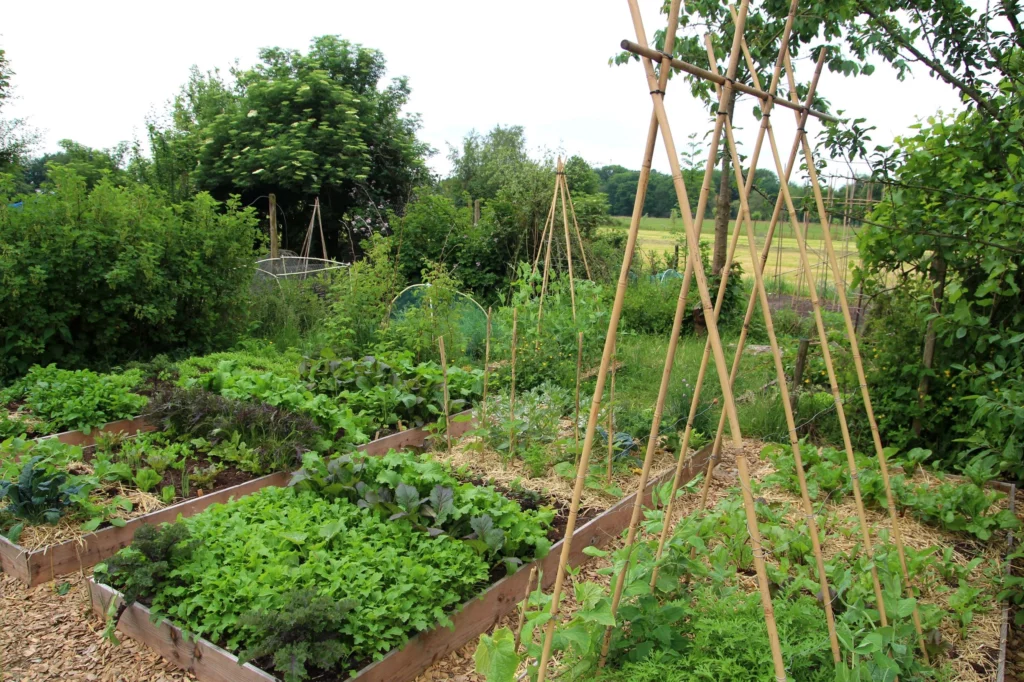It is hard to imagine a balanced diet without beans. In the vegetable garden they are easy to care for and even improve soil fertility! In this article you will learn what you need to consider when growing them and how to find the right variety in the huge variety.
Raw beans contain the toxic phasin, it is essential to cook them before eating!
- Bush beans: Sow from the beginning of May in rows or as eyries. Bush beans are particularly easy to care for.
- Runner beans: Sow from mid-May, in circles around the stalks. The climbing plants require poles for support; they are somewhat more demanding than bush beans.
- Fire beans: Sow from early to mid-May, depending on weather. Care similar to pole beans, but they are somewhat hardier. The fiery red flowers are particularly decorative.
- Field beans: Sow from February or early March. These cold-resistant beans develop particularly thick beans; they are eaten without pods.
Contents
General
Beans, like peas, belong to the legume family (Fabaceae). They are particularly rich in vegetable protein, dietary fiber and also contain important vitamins and minerals. But beans are not only nutritious for us humans, they also have a positive effect on the soil. Beans and other legumes form a symbiotic relationship with nitrogen-fixing bacteria. The bacteria form small nodules on the roots, which is why they are also called nodule bacteria. They are able to convert atmospheric nitrogen so that it becomes available to plants. This enriches not only the beans themselves with nitrogen, but also the soil. There is a breathtaking variety among beans, but a rough distinction is made between bush beans, pole beans, fire beans and field beans. This distinction mainly refers to the growth habit. Thus, bush beans grow rather small and bushy, while pole beans grow up long stalks.

Bean varieties
Bush beans are the easiest to care for among beans, growing only about knee-high and requiring no climbing support. Like pole and fire beans, they originated in Central America and therefore love warmer temperatures. They are available with green, yellow, speckled or purple pods. Green varieties include ‘Caruso’, ‘Marona’ (early maturing) and ‘Domino’ (late maturing). ‘Berggold’ and ‘Helios’ varieties form yellow pods. ‘Purple Teepee’ and ‘Purple King’ surprise with purple pods that turn green when cooked.
The climbing pole beans grow up to three meters high and therefore need a climbing aid. Here, too, the diversity of varieties is almost unmanageable. There are green, yellow, pied and purple varieties. The ‘Berner Landfrauen’ and the ‘Neckarkönigin’ are adapted to our regional climate conditions and therefore very popular with many gardeners. The purple ‘Blauhilde’ also turns green when cooked. Yellow bean varieties are also called wax beans, and include the ‘Neckargold’, ‘Berner Butter’ and the ‘Goldmarie’ varieties.
Fire beans are particularly decorative because of their colorful flowers. They form dense, green carpets of fire-red or white flowers and are therefore popular as flowering screens. The individual beans are usually artistically marbled, and a distinction is made primarily according to flower color. Red flowering varieties include ‘Prize Winner’, ‘Butler’ and ‘Golden Sunshine’, while white flowers are found in ‘White Giants’. ‘Painted Lady’ is a mix of these and bears bicolored flowers.
Field beans are much hardier than the heat-loving garden beans. They are sown much earlier and form particularly thick pods and individual beans. They do not grow as tall as pole beans and fire beans and usually do not require support. A distinction is made between early and late varieties. Early varieties include ‘Witkiem’, ‘Dreifache Weiße’ and ‘Osnabrücker Markt’. Late varieties are ‘Hangdown’, ‘Listra’ and ‘Perla’.

Location
In general, beans do not have a particularly high nutrient requirement; too much nitrogen actually harms them. So don’t plant your beans on freshly fertilized beds. They like a loose soil structure that can be enriched with some compost. Bush beans will grow in partial shade, but pole beans prefer sunnier spots. Fire beans are relatively hardy, thriving even in less good soils and harsher locations. In such locations, it is therefore advisable to plant fire beans rather than the heat-loving pole beans. Field beans are very vigorous and can grow in heavy soils. In particularly light, dry soils, sufficient moisture must be provided. You can improve the water retention of your soil by using mulch and compost. Find out more about soil improvement here.
Mixed culture, crop rotation & crop rotation
Mixing crops with savory protects against black aphids. It is also recommended to have a growing interval of at least 3 years between beans on the same bed. Some gardener:s classify pole beans as self-tolerant, just like tomatoes. This means that you can grow them in the same place every year. In any case, the key here is to keep your eyes open for pest and disease infestations! However, if you have enough space, you should also rotate pole beans in the garden. Bad neighbors are peas, fennel, garlic, leeks and onions.
Good neighbors for bush beans are savory, strawberries, cucumbers, cabbage, kohlrabi, beets, lettuce, celery, tomatoes, potatoes, head lettuce, and pick lettuce. Runner beans can be planted as windbreaks for sensitive crops such as cucumbers. Good neighbors for pole and fire beans also include: endive, nasturtium, cabbage, kohlrabi, lettuce, tomatoes, zucchini. Field beans grow especially early in the year, with them fit plum lettuce and kohlrabi, spinach as a direct neighbor keeps the soil moist.

Sow and care for beans
Beans naturally enrich the soil with nitrogen, so nitrogen fertilization should be avoided at all costs! Be sure to maintain even soil moisture for all beans.
Bush beans: Depending on the variety, first sowing is possible from early to mid-May, with subsequent sowing in June to early July. Bush beans tolerate both sun and partial shade. Fertilization with compost and mulch is quite sufficient. The soil should always be loose and crumbly. Sowing 2-3 cm deep. In the row, place a bean every 5-10 cm, row spacing 40 cm. For cluster sowing, place 4-6 beans in a trough every 40 cm.
Runner beans: Sow only from mid-May, otherwise the seeds will rot in the cold soil. In terms of care, they are somewhat more demanding than their bushy relatives: they need more heat, water, nutrients and, above all, more space! Nutrient needs can be met with compost and organic fertilizer with low nitrogen content, such as wood ash or bone meal. Wooden poles 2 m high are used as a climbing aid. These are either dug in vertically or leaned against each other in rows and stabilized with a crossbar. It is essential to pay attention to the compass direction so that the beans do not shade themselves too much. Alternatively, a “bean tipi” (= tent) can be built from the poles. A 3 cm deep circle is drawn around each pole, in which 6-8 beans are placed at a time.
Fire beans: The beans climb up poles, fences, balcony grates or similar. The first sowing is done in early to mid-May, depending on the weather. Care is the same as for pole beans.
Field beans: Field beans have been in Europe longer than their relatives from Central and South America, so they are better adapted to our climate. They are very cold resistant and should be sown even as early as February or early March, depending on the climate. With early sowings, the plants grow particularly robust and are less susceptible to black aphids. Field beans should also not be planted on freshly fertilized beds; a compost supply is sufficient here. They thrive even on heavy soils and can loosen it up with their deep-reaching roots. Sow in rows with 40 cm spacing. Place two beans 5 cm deep every 15-25 cm in the row. Thin out the young plants so that they stand freely. Later, they are mounded to improve the stability.

Diseases & Pests
Beans become more susceptible to diseases and pests due to excessive nutrients in the soil. Nitrogen fertilization should be avoided at all costs! Mixing crops with savory can keep black aphids away. Black aphids are particularly persistent in field beans; early sowings and an airy stand can help prevent them. Pinch out the aphid-infested tips. Natural enemies of aphids are, for example, ladybugs. Learn how to encourage ladybugs and other beneficial insects in the garden here.
Beans should never be handled or harvested in wet weather, this way fungal diseases can be prevented. Sometimes leaf spot disease caused by a fungus can occur, spraying with horsetail tea will help. Mosaic virus forms yellowish or dark patterns on leaves. Unfortunately, since viruses spread rapidly, nothing more can be done here and the diseased plants should be destroyed. The pea moth leaves bored and eaten beans with fecal piles in the pods. At flight time in May/June, beans can be covered with a single-mesh crop protection net. Late sowings can be used to avoid the flight period, as the caterpillars can only cause damage in the flowering and seed stages.

Harvest beans
After harvesting, cut off only the above-ground part of the plants. The roots with the nodule bacteria should remain in the soil for natural nitrogen enrichment.
Bush beans: Continually harvest fresh as long as new beans are growing back. Bush beans should be harvested as young and tender as possible or they will become fibrous. Pick beans carefully and do not tear them off to avoid damaging the plant.
Runner beans: Continuously harvest fresh throughout the summer. Young, tender beans taste the finest. So it’s better to harvest pole beans early before they become hard.
Fire beans: Be sure to harvest the strong pods while they are still young and tender; later they become hard and “fuzzy.” All three garden beans are used with pods.
Field beans: Harvest the semi-ripe green pods while the seam is still brightly colored. However, only the thick, tender seeds are cooked and eaten.
Obtaining bean seeds
To obtain your own seeds, simply allow the pods to fully mature on the plant and dry. Then remove the bean seeds from the dry pods, let them dry again and store them for next year. Bean seeds usually have a shelf life of 3-4 years.
Processing & Preserving
Beans contain the toxic phasin, they must always be cooked before consumption! Bush beans are eaten with the pod. You can freeze them very easily, boil them down, dry them or pickle them in salt (and vinegar). You can find out exactly how to do this in our article on preserving. Fresh they taste very good as bean salad with fine diced onions. Beans can be combined in the kitchen in many ways, here you can experiment a lot! Savory is not only a good plant neighbor, but also tastes very delicious with various bean dishes. Runner beans are also eaten with pods. They can be used in a similar way as bush beans, here either the whole pods or only the individual beans can be dried. Fire beans are particularly suitable for strong, spicy soups; individual beans can also be dried. Field beans can be frozen well. Fresh you can fry them together with sugar peas and then deglaze with soy sauce, delicious!


